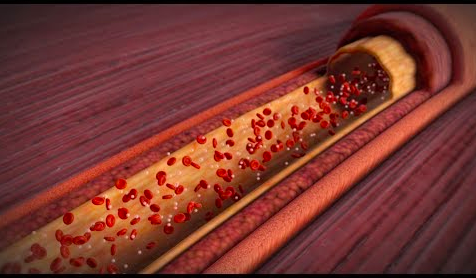If you recently underwent treatment for a heart attack, a disorder brought on by a stoppage of blood flow to your heart muscle. The main pumping chamber of your heart is the left ventricle. When your left ventricle contracts, it sends oxygen-rich blood to your body through a large artery called the aorta. Connected to your aorta are small arteries called coronary arteries. Blood flows from your aorta through the coronary arteries to supply your heart muscle with oxygen and nutrients.
During your heart attack blood flow through one of your coronary arteries may have been severely reduced or completely blocked. Your reduced blood flow may have been caused by a buildup of a fatty substance called plaque in your coronary arteries If this plaque became disrupted a blood clot might form and severely worsen the narrowing or lead to a sudden complete blockage Stopping blood flow down the artery. A blockage in your coronary arteries prevented the oxygen and nutrients in your blood from reaching that part of your heart supplied by the artery as a result heart muscle in that area started to die, damage to part of your heart muscle is called a heart attack. It’s also known as a myocardial infarction or MI.
Treatment:
A procedure to assist in opening the blockage and enhancing blood flow to the injured area may have been suggested by your heart specialist. Your operation may have been a coronary angioplasty, which involves the insertion of a catheter with a balloon tip to expand the blocked coronary artery and open it. A stent may have been inserted during the treatment to aid in keeping the artery open. You may have received a coronary artery bypass graft or CABG, or this is often a thin metal mesh that serves as a scaffold.
During a CABG, the body’s own veins or arteries are used to circumvent the blocked portions of the coronary arteries. Your doctor most certainly gave you prescriptions for various drugs before you were discharged from the hospital.
The following medications can be part of your regimen:
Oral anti-platelet therapy helps stop platelets from congregating and creating new blood clots. A low-fat diet and statins may have been prescribed to you to lower your cholesterol. You may also have received beta blockers, which reduce your heart rate and blood pressure. Angiotensin converting enzyme (ACE) inhibitors, angiotensin receptor blockers, and calcium channel blockers can also lower your blood pressure if necessary. These medications reduce the amount of cholesterol your liver produces. Even if you feel better, it’s vital to continue taking your prescriptions as directed by your doctor. If the doctor who provided your prescription doesn’t say to stop taking it, don’t. Avoid fatty, spicy, bakery, alcoholic, and smoked meals. Heart patients can benefit greatly from morning walks since they help them stay relaxed and pleasant.
List of Tags:
animation, nucleus medical media, patient education, patient engagement, 3D, animated, ace, inhibitors, angiotensin-converting, enzyme, aorta, artery, balloon, angioplasty, beta-blockers, blood, pressure, vessels, cabg, calcium, blockers, cardiac, cardiology, system, cholesterol, coronary, arteries, bypass, graft, heart, attack, disease, medicine, oral, antiplatelets, percutaneous, transluminal, procedure, statins, stent, surgery, treatment
